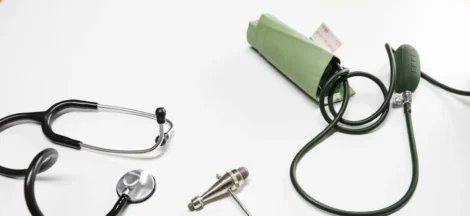After tooth extraction, consuming soft, gentle foods on the healing site is crucial to avoid discomfort or complications. When a tooth is extracted, the extraction site is left with an open wound where the tooth once was. This area is sensitive and prone to irritation, making it essential to choose foods that are easy to chew and swallow. Soft foods are gentle on the healing gums and reduce the risk of disrupting the blood clot that forms over the extraction site, which is crucial for proper healing.
Eating soft foods also minimizes discomfort and pain associated with chewing. Hard or crunchy foods can put unnecessary pressure on the extraction site, potentially leading to discomfort or even injury. Soft foods, on the other hand, require minimal effort to chew and can be eaten without causing additional strain on the healing area. Here’s a list of 50 soft foods to eat after tooth extraction that you can consider.

Applesauce:
Applesauce is a smooth and easy-to-swallow option made from cooked and blended apples. It’s naturally sweet and can be enjoyed plain or flavored with cinnamon for added taste.
Mashed Potatoes:
Mashed potatoes are comforting and creamy, made by boiling and mashing potatoes with butter and milk. They are versatile and can be seasoned with herbs like parsley or chives.
Yogurt:
Yogurt is a dairy product that’s soft and creamy, providing probiotics that can be beneficial for digestion. Opt for plain yogurt to avoid added sugars.
Smoothies:
Smoothies are blended beverages made with fruits, yogurt, and liquids like milk or juice. They’re refreshing, easy to consume, and can be customized with various fruits and flavors.
Scrambled Eggs:
Scrambled eggs are soft and protein-rich, perfect for a gentle meal after a tooth extraction. Cook them until they are fluffy and easy to chew.
Oatmeal:
Oatmeal is a warm and soothing breakfast option that’s easy on the gums. Customize it with honey, mashed banana, or soft berries for added flavor.
Cottage Cheese:
Cottage cheese is a soft and mild cheese option that’s easy to scoop and swallow. It’s high in protein and can be paired with fruits or a drizzle of honey.
Pudding:
Pudding is a smooth and creamy dessert that requires minimal chewing. It comes in various flavors like chocolate, vanilla, or butterscotch.
Jell-O:
Jell-O is a gelatin dessert that’s wobbly and fun to eat. It comes in different flavors and is easy to swallow without much effort.
Ice Cream:
Ice cream is a classic soft treat that’s cold and soothing after a tooth extraction. Opt for flavors without hard mix-ins like nuts or candies.
Milkshakes:
Milkshakes are creamy and delicious drinks made with ice cream and milk. They’re easy to sip through a straw and can be flavored with syrups or fruits.
Soup:
Smooth and blended soups like tomato or potato soup are gentle on the mouth. They provide warmth and hydration while being easy to consume.
Hummus:
Hummus is a smooth dip made from chickpeas, tahini, and olive oil. It can be enjoyed with soft pita bread or crackers.
Avocado:
Avocado is soft and buttery, perfect for mashing into guacamole or spreading on soft bread. It’s packed with healthy fats and nutrients.
Soft Cooked Vegetables:
Carrots, squash, and similar vegetables can be cooked until tender and easily mashed with a fork. They provide vitamins and minerals without requiring much chewing.
Cooked Lentils:
Lentils are protein-rich legumes that can be cooked until soft and blended into soups or stews for added nutrition.
Macaroni and Cheese:
Soft pasta coated in creamy cheese sauce is a comforting, easy-to-eat meal option.
Soft Cheeses:
Brie or cream cheese can be spread on soft bread or crackers for a mild and creamy snack.
Grits:
Grits are a Southern dish made from ground corn that’s cooked until smooth and creamy. They can be flavored with butter or cheese.
Soft Bread:
Bread without crusts or soft rolls is easy to chew and can be paired with spreads like butter or jam.
Rice:
Well-cooked rice is soft and can be paired with gentle flavors like butter or soy sauce.
Tofu:
Tofu is a soft and versatile protein source that can be blended into smoothies or cooked in soft dishes like tofu pudding.
Pancakes:
Soft pancakes can be made with a smooth batter and topped with syrup or fruit compote for a satisfying meal.
Waffles:
Soften waffles with syrup or yogurt to make them easier to chew and swallow.
Custard:
Custard is a smooth and creamy dessert made from eggs, milk, and sugar. It’s gentle on the mouth and can be flavored with vanilla or caramel.
Fruit Smoothies:
Fruit smoothies are blended beverages made with soft fruits like bananas, berries, or mangoes. They are refreshing, nutritious, and easy to consume after a tooth extraction.
Mashed Banana:
Mashed banana is soft, naturally sweet, and requires minimal chewing. It’s rich in potassium and can be enjoyed plain or added to oatmeal or yogurt.
Steamed Vegetables:
Steamed vegetables like broccoli, cauliflower, or carrots are tender and easy to chew. They retain their nutrients and can be seasoned lightly for flavor.
Creamy Soups:
Creamy soups such as cream of mushroom or broccoli cheddar are smooth and comforting. They provide warmth and are gentle on the healing mouth.
Mashed Peas:
Mashed peas are soft and nutritious, offering fiber and protein. They can be seasoned with a touch of butter or olive oil.
Mashed Sweet Potatoes:
Mashed sweet potatoes are naturally sweet and soft. They can be seasoned with a sprinkle of cinnamon or nutmeg for extra flavor.
Gelatin Desserts:
Gelatin desserts are wobbly and easy to swallow. They come in various flavors and are a fun treat during recovery.
Soft-Cooked Noodles:
Soft-cooked noodles like those in chicken noodle soup are easy to chew and swallow. They provide comfort and are satisfying to eat.
Blended Fruits:
Blended fruits such as mango or peach puree are smooth and gentle on the gums. They can be enjoyed as a snack or dessert.
Cottage Cheese:
Cottage cheese is soft and mild, rich in protein and calcium. It can be paired with soft fruits or a drizzle of honey.
Mashed Cauliflower:
Mashed cauliflower is a low-carb alternative to mashed potatoes. It’s creamy and can be seasoned with herbs or garlic.
Cooked Cereals:
Cooked cereals like Cream of Wheat or rice porridge are easy to swallow and provide comforting warmth.
Rice Pudding:
Rice pudding is a creamy dessert made from rice, milk, and sugar. It’s gentle on the mouth and can be flavored with vanilla or raisins.
Porridge:
Porridge made from oats, barley, or other grains is soft and nourishing. It can be sweetened with honey or maple syrup.
Soft-Cooked Fish:
Soft-cooked fish like cod or sole are tender and easy to chew. It’s a good source of protein and omega-3 fatty acids.
Milk-Based Puddings:
Milk-based puddings such as chocolate or vanilla pudding are smooth and satisfying desserts.
Cream of Chicken Soup:
Cream of chicken soup is creamy and flavorful, providing protein and warmth. It’s easy to consume after a dental procedure.
Macaroni and Cheese:
Macaroni and cheese is a classic comfort food made from soft pasta coated in creamy cheese sauce.
Butternut Squash Soup:
Butternut squash soup is smooth, slightly sweet, and nutritious. It’s easy to digest and full of vitamins.
Smooth Nut Butters:
Smooth nut butter like peanut or almond butter is soft and packed with protein and healthy fats. Spread them on soft bread or crackers.
Mashed Pumpkin:
Mashed pumpkin is soft, naturally sweet, and easy to eat. It can be seasoned with cinnamon or nutmeg.
Soft Bread Rolls:
Soft bread rolls without crusts are easy to chew and can be paired with spreads or fillings of your choice.
Soft Tofu Dishes:
Soft tofu can be blended into smoothies, soups, or puddings for added protein and creaminess.
Scrambled Tofu:
Scrambled tofu is a plant-based alternative to scrambled eggs. It’s soft, protein-rich, and versatile in flavor.
Mashed Potatoes:
Mashed potatoes are soft, creamy, and comforting. They can be seasoned with butter, herbs, or cheese for extra flavor.
These detailed descriptions should provide you with a comprehensive overview of each soft food option and how they can contribute to a comfortable and nutritious recovery after tooth extraction. Adjust the textures and flavors based on your preferences and dietary needs.
Why eating soft foods is essential after a tooth extraction:
Eating soft foods is essential after a tooth extraction for several important reasons:
1. Promotes Healing:
After a tooth extraction, the extraction site is sensitive and needs time to heal. Eating soft foods minimizes irritation and reduces the risk of disrupting the blood clot that forms in the socket, which is crucial for proper healing.
2. Prevents Discomfort:
Chewing hard or crunchy foods can be painful and may cause discomfort around the extraction site. Soft foods are gentle on the gums and teeth, allowing for easier eating without aggravating the healing area.
3. Reduces Risk of Complications:
Consuming hard, sticky, or crunchy foods can dislodge the blood clot that forms over the extraction site, leading to a condition called dry socket, which can be painful and delay healing. Soft foods minimize this risk.
4. Maintains Nutrition:
Despite needing to eat softer foods, it’s important to maintain a balanced diet rich in nutrients. Soft foods like yogurt, mashed vegetables, and smoothies can still provide essential vitamins, minerals, and protein necessary for healing.
5. Facilitates Proper Hygiene:
Eating softer foods reduces the need for excessive chewing, which can be challenging when trying to avoid the extraction area. It also makes it easier to maintain oral hygiene without disturbing the healing process.
6. Restores Appetite:
After a tooth extraction, some people may experience a decreased appetite due to discomfort or swelling. Soft, easy-to-eat foods can help restore appetite and ensure adequate calorie intake during recovery.
7. Minimizes Risk of Injury:
Avoiding hard foods reduces the risk of accidentally biting down on the extraction site, which can cause pain, bleeding, or other complications.
Overall, eating soft foods after a tooth extraction is vital for ensuring a smooth and speedy recovery while minimizing discomfort and complications. It’s important to follow your dentist’s post-operative instructions regarding diet to promote optimal healing and oral health.
Related: How to fix a cracked tooth naturally?
Related: How to speed up bone graft healing?





 Why Louvered Pergola Roofs Are an Emerging Trend
Why Louvered Pergola Roofs Are an Emerging Trend